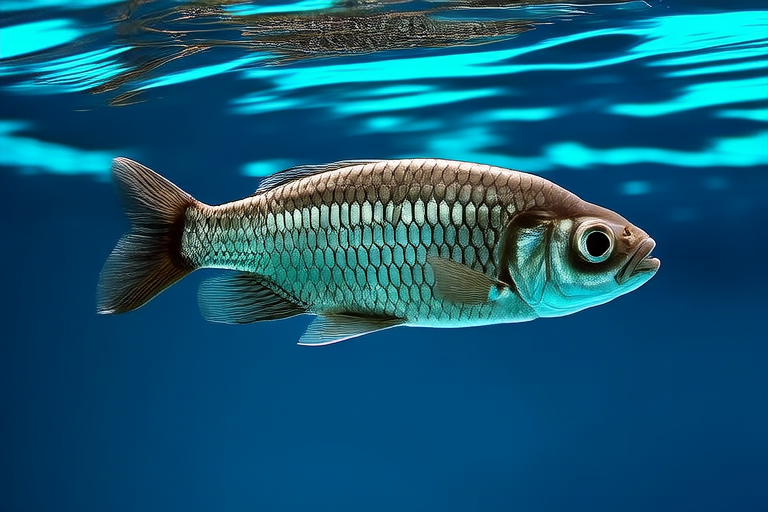The King of the Waters: How to Care for Your Arowana Like a Pro
Welcome to the world of arowanas, the majestic kings of the waters. Known for their striking appearance and regal demeanor, these fish are a favorite among aquarists. However, their size and specific needs require careful attention. This guide will provide you with expert advice on how to care for your arowana like a pro, ensuring they thrive in your aquarium.
Optimal Tank Setup
Setting up the right environment is crucial for the well-being of your arowana. These fish need ample space to swim and grow. For a single adult arowana, a tank of at least 300 gallons is recommended. The dimensions should be long and wide rather than tall, allowing the fish to swim horizontally.
- Water Depth: Aim for a depth of around 4 feet to ensure the fish can move freely without stress.
- Substrate: Use large, smooth pebbles or sand to prevent injuries from sharp edges. Avoid gravel as it can get stuck in the fish’s gills.
- Filtration: Invest in a powerful external filter that can handle the volume of water efficiently. Arowanas produce a significant amount of waste, so strong filtration is essential.
- Decorations: Provide some hiding spots and structures, but keep them simple. Overcrowding the tank with decorations can limit swimming space and cause stress.
- Heating: Maintain a temperature between 78°F and 82°F (25°C to 28°C) using a reliable heater.
- Lighting: Install full-spectrum lighting for approximately 10-12 hours per day to mimic natural daylight cycles.
Water Parameters
Arowanas are sensitive to changes in water quality. Maintaining stable and appropriate water conditions is vital for their health.
- pH Level: Aim for a pH range between 6.5 and 7.5. Regular testing is necessary to ensure stability.
- Hardness: Keep the water hardness within 5 to 15 dGH. Soft water is preferred by most arowanas.
- Ammonia and Nitrite Levels: Both should be undetectable. Regular partial water changes (about 20% weekly) help maintain these levels.
- Nitrate Levels: Maintain nitrate levels below 20 ppm through consistent maintenance and water changes.
Use dechlorinated water for all water changes to protect the fish from harmful chemicals.
Diet Specifics
Arowanas are carnivorous and require a varied diet rich in protein. They enjoy live foods such as feeder fish, shrimp, and insects. However, offering a balanced diet is essential to prevent nutritional deficiencies.
- Feeding Frequency: Feed your arowana once or twice daily, offering as much food as they can consume within 5 minutes.
- Live Foods: Introduce live foods occasionally to stimulate their natural hunting instincts. Ensure that the feeder fish are healthy to avoid transferring diseases.
- Commercial Foods: High-quality pellets designed for predatory fish can be used as a staple diet. Look for products that contain high levels of protein and minimal fillers.
- Variety: Rotate different types of food to ensure a diverse intake of nutrients. Consider adding occasional treats like earthworms or krill.
Always monitor your fish’s appetite and adjust feeding amounts accordingly. Overfeeding can lead to obesity and health issues.
Health Indicators
Regular observation is key to maintaining the health of your arowana. Familiarize yourself with the signs of good health and potential problems.
- Behavior: Healthy arowanas are active swimmers with an alert demeanor. Lethargy or refusal to eat may indicate illness.
- Gills: Check for any discoloration or abnormal movement. Respiratory distress can be a sign of poor water quality or disease.
- Scales: Inspect the scales for any lesions, discoloration, or unusual growths. Healthy scales should be smooth and intact.
- Eyes: Clear eyes indicate good health. Cloudiness or bulging could suggest infection or other issues.
- Color: A vibrant coloration is a good sign. Pale or dull colors may indicate stress or disease.
If you notice any concerning symptoms, consult a veterinarian specializing in aquatic animals for diagnosis and treatment.
Common Mistakes to Avoid
Despite their popularity, arowanas have specific care requirements that, if overlooked, can lead to health issues. Here are some common pitfalls to avoid:
- Underestimating Space: Providing insufficient space can cause stress and limit the fish’s ability to swim and grow.
- Improper Water Quality: Neglecting regular water testing and maintenance can lead to ammonia spikes and other toxic conditions.
- Inadequate Diet: Failing to offer a balanced diet can result in malnutrition and weakened immune systems.
- Overstocking: Adding too many fish to the tank can increase competition for food and space, leading to aggression and stress.
- Lack of Observation: Not monitoring the fish regularly can delay the detection of health issues, making treatment more challenging.
By being proactive and attentive, you can prevent many common problems and ensure a long, healthy life for your arowana.
Conclusion
Caring for an arowana requires dedication and knowledge, but the rewards are immense. With the right setup, diet, and attention to detail, you can create a thriving environment for these magnificent creatures. Remember, the key to successful arowana care lies in understanding their unique needs and providing the best possible conditions. By following the advice outlined in this guide, you’ll be well-equipped to care for your arowana like a true professional.
